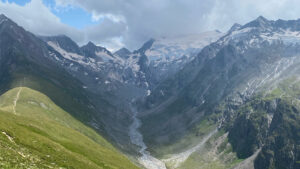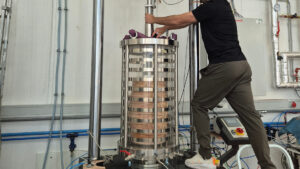Natural hazards in mountainous regions
Details
Full Title
Natural hazards in mountainous regions – Introduction to the different types of natural hazards common in mountain regions
Suggested by
Maria Honisch, Alaq Al-Rubaye, Mona Siahkouhi
The respective workshop calls for contributions regarding ...
- Geotechnical Engineers
- Geologists
- Environmental Scientists
- Civil Engineers
- Disaster Risk Management Professionals
- Students interested in natural hazards
Keywords
soil mechanics, natural hazards, geotechnical analysis, geological analysis, landslides
Type
Sessions
Description
Mountainous regions are prone to a variety of natural hazards, including landslides, avalanches, earthquakes, and floods, which can have devastating impacts on communities and infrastructure. Understanding these hazards and implementing effective mitigation strategies are crucial for reducing risk and enhancing resilience. This session aims to provide participants with a comprehensive introduction to the types of natural hazards prevalent in mountainous regions and the existing strategies employed to mitigate their effects. Discussions will focus on: Identifying and characterizing different natural hazards in mountain environments, evaluating the effectiveness of various mitigation measures, such as engineering solutions, land-use planning, and early warning systems, exploring interdisciplinary approaches that integrate geosciences, engineering, and social sciences for comprehensive hazard assessment, understanding the role of community engagement and educational researches in disaster preparedness and response.
Participants are encouraged to share their experiences, challenges, and successes related to natural hazard management in mountainous regions.
This session will provide a foundation for understanding the geotechnical factors that contribute to these events as well as a discussion and sharing of ideas about mitigation techniques and their effectiveness.
Format/Concept
The workshop will combine informative presentations with interactive discussions:
- Presentations: Short talks by all participants highlighting key aspects of natural hazards and mitigation strategies in mountainous regions.
- Case Studies: Examination of selected real-world examples to illustrate successful mitigation efforts and lessons learned.
- Group Discussions: Open forums for participants to share experiences, discuss challenges, and brainstorm innovative solutions.
- Resource Sharing: Compilation of relevant literature, tools, and best practices for further learning.
Objective: Provide participants with a clear understanding of the different types of natural hazards common in mountain regions. Exchanging the ideas about mitigation strategies and brain storming about new possible strategies.

